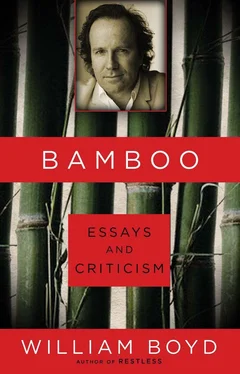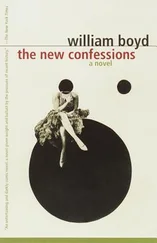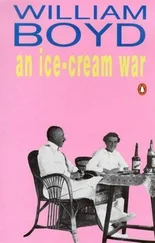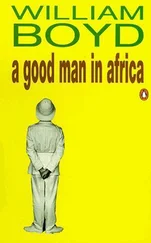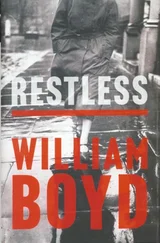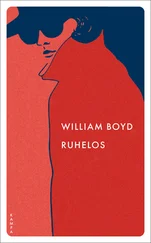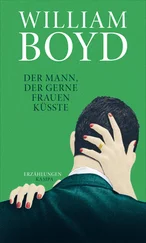One more piece of evidence: towards the end of the novel when Tony is sailing to South America he has a shipboard romance with a young girl called Thérèse. In the previously quoted letter to Henry Green, Waugh admits, “I think the sentimental episode with Thérèse is probably a mistake.” He was right: it’s a mistake because we think that it is positioned there so that Tony will find some romantic reward for his sufferings — and the romance is painted with real tenderness — but it turns out that, as soon as Thérèse finds out Tony is married (i.e. not divorced) she loses all interest in him. Yet another insincere woman dissembling to try and catch a husband. Martin Stannard, in his biography, points out that Thérèse was originally named Bernadette but the name was changed in the manuscript. Prior to writing the novel Waugh had proposed to Teresa Jungman, had been rejected and was severely heartsore (he dedicated the Dutch edition of A Handful of Dust to her). Circumstantial evidence? Yes, perhaps, but the more it mounts the harder it becomes not to read A Handful of Dust as Waugh’s individual cry of pain.
The novel is full of hate and scorn, not just for Brenda, but also for the society in which she moves. The smart world of metropolitan London is portrayed by Waugh as utterly dissolute, genuine venom lurking beneath the ostensible social satire. The only woman in that world who escapes total censure, interestingly enough, is the morphine addict Mrs Rattery — who is of real and coolly efficient support to Tony in the hours after John Andrew’s death. Mrs Rattery, morphineuse and aviatrix, can retreat from the social whirl through her drugs, her self-absorption (her endless games of patience) or — physically — by taking to the air in her flying machine. There is something enviably godlike about her impassivity and emotional distance from the rest of the characters in the novel.
The social world of the novel — of night clubs and house parties, soirées and silly fads — is the world that Waugh himself occupied and was intimate with. It is depicted with a cold and unsparing eye and I would suggest that this explains the title Waugh eventually chose (he was going to call the book A Handful of Ashes). “I will show you fear in a handful of dust” is about the emptiness at the heart of this section of society. Eliot’s poem, to put it very simply, seems notionally about seeking some form of restoration (rain, rebirth, regrowth), redemption (some Grail substitute) or salvation (some spiritual peace) in a world turned waste land. But looked at from a slightly different angle (again trying to ignore the poem’s reputation and critical baggage acquired over the years) it can be argued that in fact The Waste Land is all about sex — seedy, unsatisfactory, loveless, dangerous, destructive sex. It abounds in references to sex, is steeped in it, almost obsessively so. The context of the four lines Waugh cites as his epigraph (and usually authors do not choose epigraphs lightly) comes just before the introduction of the “hyacinth girl.” Would one think of Brenda Last? “… your hair wet…/I was neither/living nor dead, and I knew nothing/looking into the heart of light, the silence.” Brenda, with her “fair underwater look” (not a bad description of Evelyn Gardner, either) … Circumstantial evidence, admittedly, but the file is growing.
Waugh wrote the first two-thirds of this novel at great speed, fresh from his rejection by Teresa Jungman (his one great love after Evelyn Gardner) and his regular testimony to the Roman Catholic authorities about the sham and frivolity of his first marriage. That bitterness and resentment found its place in the bleak story of Brenda Last’s betrayal of her husband and the curse they suffered of their child’s awful death. And then Waugh stopped, unable to think how to conclude the book, knowing only that he wanted Tony to come to “a sad end.” In the event he took over, almost wholesale, an earlier short story and hitched it on to his incomplete novel. Fiddling around here and there with themes and images, chapter headings and symbols, he endeavoured to give the book some coherence. But in fact the most integral conclusion to the book was the one he had already written to complete the American serialization. It is a very short final section, some seven or eight pages, and is meant to come after Tony and Brenda have agreed to a divorce. It picks up the story after Tony has returned from an uneventful tourist trip in the Caribbean and is met at Southampton docks by Brenda. The couple are reconciled, after a fashion (Beaver, tiring of Brenda, has tried and failed to seduce Mrs Rattery, and has gone abroad), and Tony, it appears, has forgiven her — or decided to ignore — her aberration. Months later they go up to town (Brenda is now pregnant). Tony goes to see Mrs Beaver about Brenda’s flat and makes a deal to keep it on (Brenda knows nothing). The implication is that Tony will be coming up to town more frequently himself and will need the flat to entertain girlfriends. In the final lines of the chapter Tony lies to Brenda:
“Did you get rid of the flat?” she asked.
“Yes, that’s all settled.”
It’s not exactly a lie but the reader knows (as the reader knew earlier when Brenda committed her sin of omission) that Tony is going to find the flat very useful indeed. The last line reads: “And the train sped through the darkness towards Hetton.”
The changes of emphasis are hugely significant: in the novel Tony’s fate is as a helpless victim; Mr Todd’s torture a symbol of the malign indifference of the universe. In the magazine version he is instead actively responsible for his own unpleasant transformation. Given the bitterness and contempt that inform the novel this alternative ending seems to me to be truer to the novel’s potent undercurrents than the short story Waugh recycled to finish off his sombre, disturbing tale of adultery, betrayal and the death of hope. Waugh republished the ending in 1963 as an appendix to the uniform edition of A Handful of Dust, describing it as a “curiosity.” We have to take it that he wanted it preserved. So why didn’t he use the ending that was specifically written for his novel? Perhaps because it would have seemed too brutally, too unsparingly cynical. Tony Last has become like everyone else in A Handful of Dust —corrupt, selfish, venal and heartless. He still has Hetton — he still has Brenda (with another child on the way) — but he now speeds through darkness to reach his home.
2003
Ernest Hemingway(Review of True at First Light)
“Honey are you bored? I’m perfectly happy reading and not being wet in the rain. You have to write letters too.”
“No. I love for us to talk together. It’s the thing I miss when there’s so much excitement and work and we’re never alone except in bed. We have a wonderful time in bed and you say lovely things to me. I remember them and the fun. But this is a different kind of talking.”
It certainly is: it is mawkish, badly composed, embarrassing and toecurlingly cute and is written, not by Danielle Steele, but by Ernest Hemingway. This passage is lifted, almost at random, from one of the interminable dialogues in what purports to be the latest and final posthumous Hemingway novel, edited — if that is the correct word — by Hemingway’s son, Patrick. The work was done, so Patrick Hemingway tells us in an introduction, along the following principles: “[the] untitled manuscript is about two hundred thousand words long and is certainly not a journal. What you will read here is a fiction half that length… which I have licked here into what I hope is not the worst of all possible shapes.” And that is all, apparently, that we need to know.
Читать дальше
